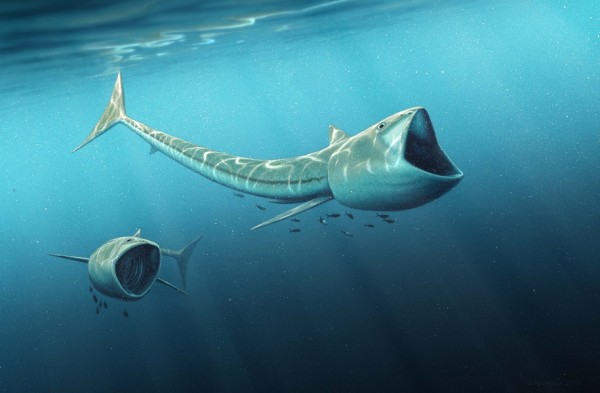By Ana Verayo, | February 10, 2016

An international team of scientists have discovered two new plankton-eating fossil fish species, of the genus called Rhinconichthys, which lived 92 million years ago in the oceans of the Cretaceous Period.
Scientists have discovered two new extinct fossilized remains of ancient fish in two vastly different locations around the globe, one in Japan and one in Colorado. Both possess large gaping mouths that can open wide enough, to collect much plankton as possible in one feeding.
The fish species found in the United States is called the Rhinconichthys purgatoirensis and the Japanese one is known as Rhinconichthys uyenoi. These specimens are new additions to the Rhinconichthys genus, where until now, only one species belonged to the group found in England some six years ago.
Like Us on Facebook
Researchers from DePaul University believe that the fish species existed some 92 million years back during the time of dinosaurs. The species found in North America, the R. purgatoirensis is estimated to measure about some two to 2.7 meters long while the Japanese one, R. uyenoi is larger at 3.4 to 4.5 meters long.
According to Kenshu Shimada of DePaul University, based on this new study, there are now three different known species under the Rhinconichthys, from three different regions around the world. This also suggests how little is known about the biodiversity of organisms during the Earth's early history.
The US species was discovered back in 2012 by Bruce A. Schumacher from the U.S. Forest Service while conducting field work. The fossilized fish was discovered form an exposed rock in Colorado where he soon began to chisel his way through the rock material, revealing fin rays of an ancient bony fish, making it the most complete Rhinconichthys fossil ever found.
The most distinct feature of the Rhinconichthys genus is its bizarre shaped, massive mouth that is similar to the modern day pelican bird where this fish has the ability to open its mouth in extreme lengths.
The mechanism behind this is a special bone known as the hyomandibulae that can extend like a lever that is shaped like an oar, swinging the jaws open to a wider angle to collect the most plankton in can possibly collect while swimming.
Shimada says that the hyomandibulae can act like an elongated lever that can allow amplified protrusion of the jaws, expanding much of its buccal cavity. This special cranial structure was previously unknown to Cretaceous era bony fish where its function is compared to modern paddlefish Polyodon along with modern day sharks.
This new study is published in the journal Cretaceous Research.
-
Use of Coronavirus Pandemic Drones Raises Privacy Concerns: Drones Spread Fear, Local Officials Say

-
Coronavirus Hampers The Delivery Of Lockheed Martin F-35 Stealth Fighters For 2020

-
Instagram Speeds Up Plans to Add Account Memorialization Feature Due to COVID-19 Deaths

-
NASA: Perseverance Plans to Bring 'Mars Rock' to Earth in 2031

-
600 Dead And 3,000 In The Hospital as Iranians Believed Drinking High-Concentrations of Alcohol Can Cure The Coronavirus

-
600 Dead And 3,000 In The Hospital as Iranians Believed Drinking High-Concentrations of Alcohol Can Cure The Coronavirus

-
COVID-19: Doctors, Nurses Use Virtual Reality to Learn New Skills in Treating Coronavirus Patients







